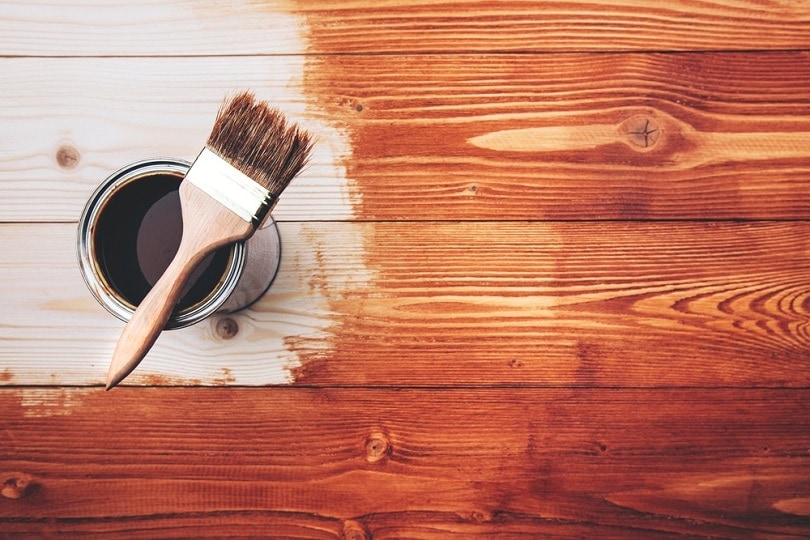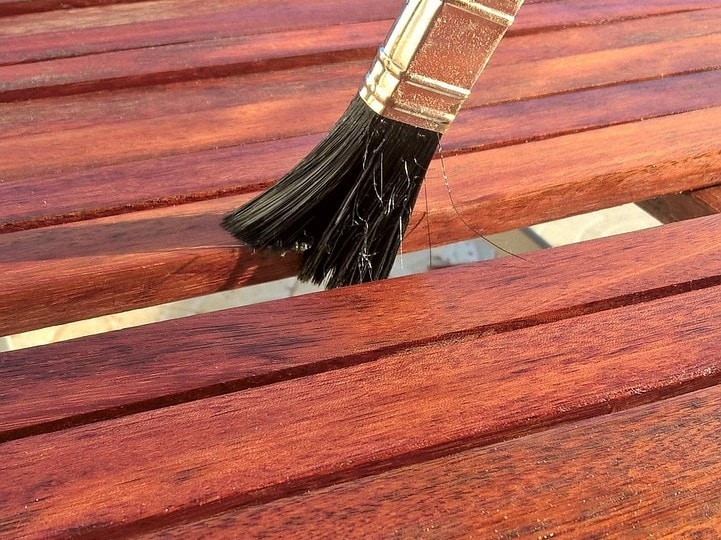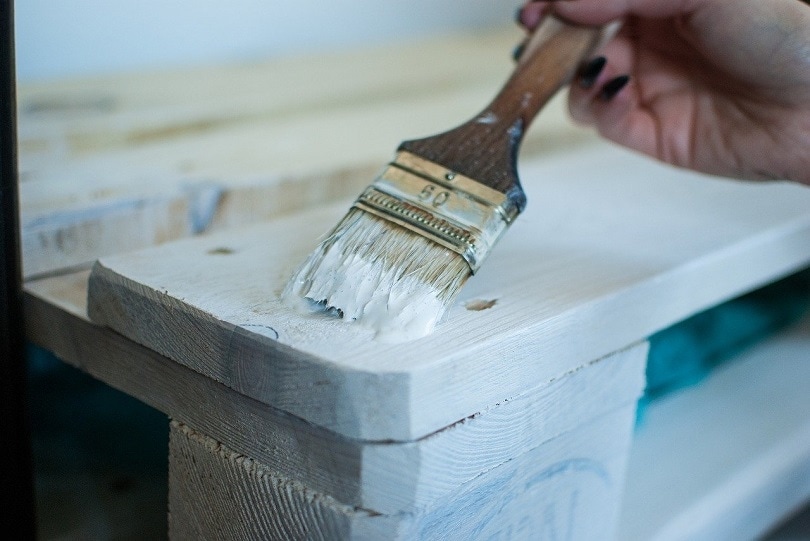9 Different Types of Wood Finishes (with Pictures)
-
Ed Malaker
- Last updated:



The 9 Different Types of Wood Finishes
1. Stain
Stain is one of the most popular wood finishes that you can use. It’s available in a wide variety of colors, and you can even make one type of wood look like another, creating a natural finish, or you can go for something more exotic. The wood’s natural grain usually shows through the stain, and though it may provide protection, you usually need to apply another finish, like a lacquer or varnish.

2. Wood Dye
Wood dyes are extremely similar to stains, and most people would not notice a difference. However, they use slightly different ingredients, and experts consider stains to be more natural-looking products, while wood dyes produce brighter colors.
3. Rub In Oils
Most rubbing oils do not add color to the wood, but they can add nutrients. The main use of rubbing oils is to provide a protective finish to the wood, and most oils cure into a hard surface. Tung oil and linseed oil are two common finishing oils, but there are many other varieties.
4. Varnish
Varnish is a popular finish that many people use on wood. It dries to a hard clear coat, so you can place it over stained wood to protect it. Additional layers of varnish will provide you with a thicker coating. The high gloss nature of varnish makes your wood projects look amazing, and it provides adequate protection from environmental damage.
5. Polyurethane
Polyurethane is a popular type of wood finish that’s similar to varnish in appearance, but while varnish uses solvents and resonance to create the finish, polyurethane uses an oil or water-based formula. It’s a little thicker than varnish, so it doesn’t require as many coats, but it’s much more expensive and not durable enough to use for projects that are going to be outside. However, most people choose it over varnish for indoor projects.
6. Stain and Polyurethane Blend
Many brands offer a stain and polyurethane blend that can help reduce the time that it takes you to apply your finish. While it does reduce the workload and many people have had great success using a blend, we prefer to apply stain and polyurethane separately.
7. Paint
One of the most versatile finishes that you can apply to wood is paint. You can use oil or latex-based paint, and it’s also available in indoor and outdoor versions. It’s one of the best solutions for wood that you intend to keep outside, and it’s available in many colors. Most home improvement centers have a paint mixer on hand so you can mix any color that you like.

8. Wood Preserver
If you like a natural finish on your wood projects but want to protect them from moisture, bugs, and other problems, a wood preserver can be your solution. There are many brands available, and most are easy to apply, only requiring you to wipe them on and wipe them off again.
9. Wax
A commercial wax-like automotive wax can help add an extra layer of protection to your wood project. It works best when applying it to a shiny surface, like glossy paint, varnish, or polyurethane. One of the biggest advantages of adding a layer of wax to your wood finish is that it provides plenty of UV protection, which will help prevent your stain or natural wood grain from fading due to sunlight.

What Finish Should I Use for My Project?
The type of finish that you use on your project will depend on several factors. First, if you plan to keep your project outside, it will need a durable finish that can stand up to the weather. The best options are exterior paint and varnish. Paint is the better choice because it’s available in more colors and usually has additional ingredients that help it withstand weathering and ultraviolet radiation. If you’re keeping your project indoors, polyurethane or indoor paint is a better choice.
If you like to look at the natural wood grain, choose a stain and protect it with rubbing oil, polyurethane, or varnish. If you prefer a solid color, point paint is a good choice, and you won’t need to worry about varnish or polyurethane. A wood preserver can help protect your project if you are unsure of what to use.

Summary
With so many different finishes available, it is understandable that it can be difficult to pick one. Starting with a stain can help you see if you like the wood grain. You can also experiment with color choice as you choose the stain that you will use. If you like the result, you can preserve it with polyurethane, varnish, or rubbing oil. If it doesn’t turn out the way that you want, you can paint over it and continue to do so until you find something that you like.
Featured Image Credit: Efetova Anna, Shutterstock
Contents